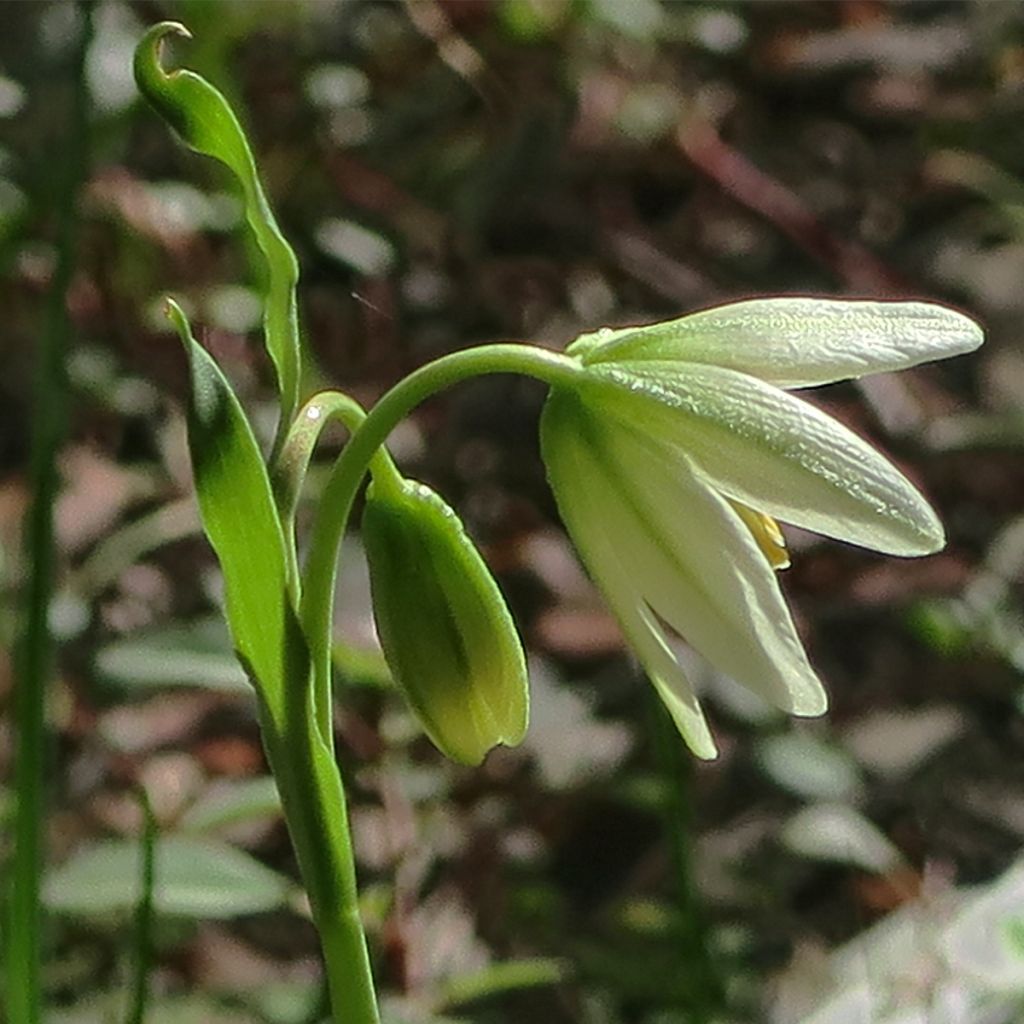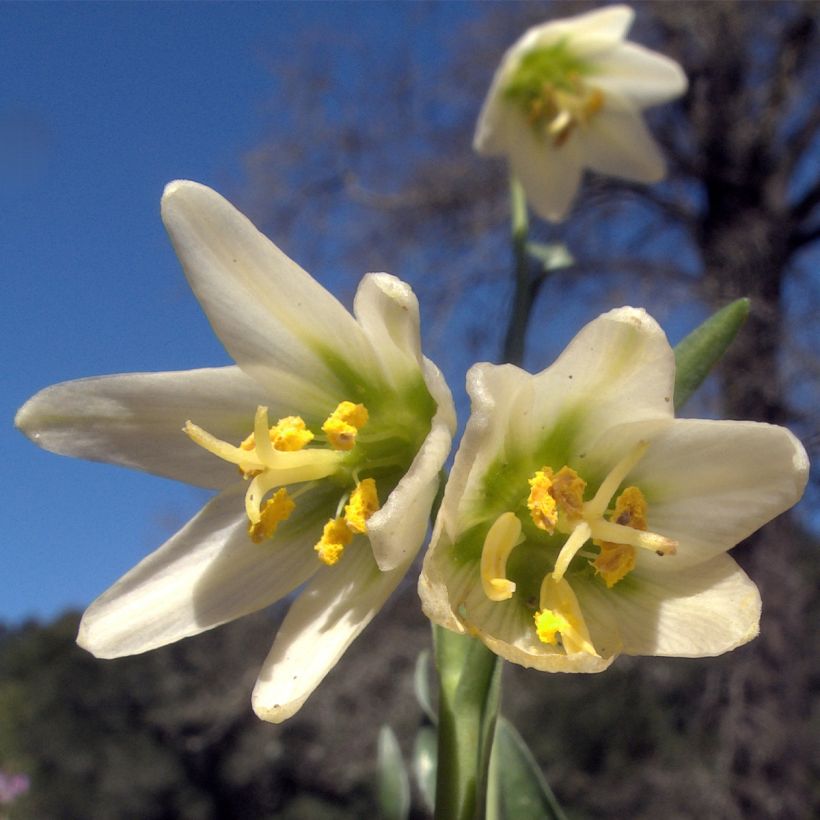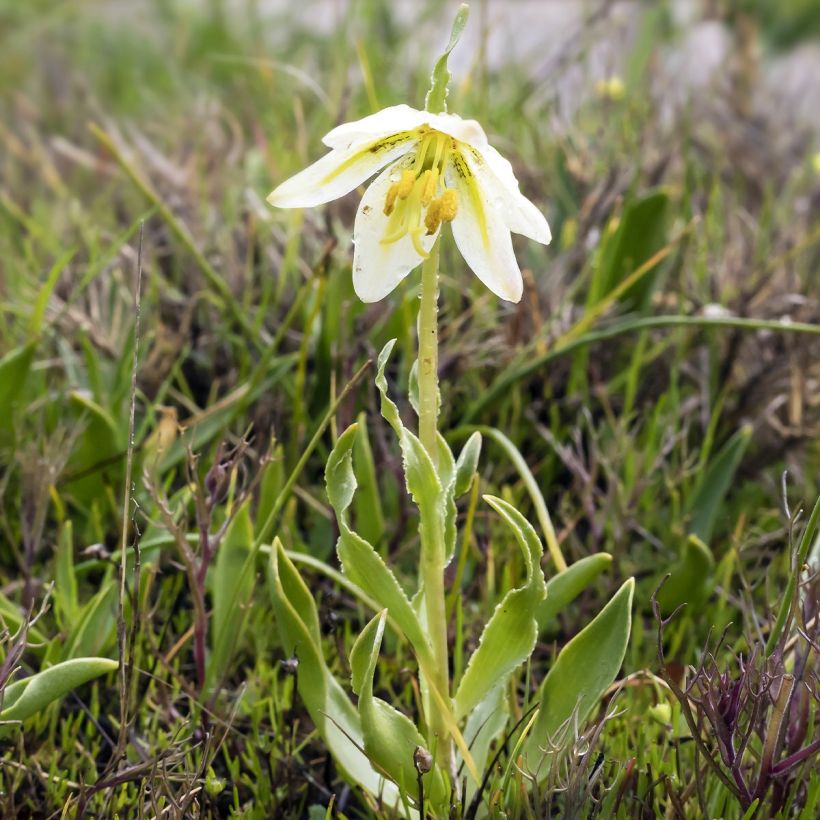

Fritillaria liliacea - Fritillaire botanique


Fritillaria liliacea - Fritillaire botanique
Fritillaria liliacea
Fritillaria liliacea
White Fritillaria
Special offer!
Receive a €20 voucher for any order over €90 (excluding delivery costs, credit notes, and plastic-free options)!
1- Add your favorite plants to your cart.
2- Once you have reached €90, confirm your order (you can even choose the delivery date!).
3- As soon as your order is shipped, you will receive an email containing your voucher code, valid for 3 months (90 days).
Your voucher is unique and can only be used once, for any order with a minimum value of €20, excluding delivery costs.
Can be combined with other current offers, non-divisible and non-refundable.
This plant carries a 6 months recovery warranty
More information
We guarantee the quality of our plants for a full growing cycle, and will replace at our expense any plant that fails to recover under normal climatic and planting conditions.
Would this plant suit my garden?
Set up your Plantfit profile →
Description
The Fritillaria liliacea is a Californian fritillary that has become rare in the wild due to the disturbance of its natural environment. This species, not very tall, is characterized by small pendulous bell-shaped flowers, whitish with a green midrib, sometimes slightly fragrant. Its flowering extends from late winter to early spring. It is a fairly delicate fritillary, adapted to heavy soils that are moist in winter and spring, but not completely dry in summer. Reserved for experienced gardeners or collectors of rare bulbous plants!
The Fritillaria liliacea belongs to the Lily family. It is found in heavy or clayey soils, often of volcanic origin (andesitic and basaltic, serpentine), on sunny slopes, scrublands, and coastal prairies in a few locations in the southwest of Northern California. It is found at altitudes of less than 200 m (656ft). There is very little data regarding its cold resistance.
The plant develops from a scaly bulb measuring 1.5 to 2.5 cm (1in) in diameter, with four to six claws. Flowering occurs from February to April, at the top of a stem measuring 15 to 35 cm (6 to 14in) in height. Each stem bears 2 to 4 bell-shaped flowers, white to cream in colour, striped with pale green and showing a green or yellow throat. Depending on the plants, the fragrance may be absent or present. Each flower, hanging towards the ground, measures about 3 cm (1in) in diameter. The fruit is a vertically oriented capsule with 6 angles. The foliage consists of 2 to 20 mainly basal, oblong-lanceolate or obovate leaves, measuring 3.5 to 12 cm (1 to 5in) in length, shiny, and bright green in colour. The above-ground vegetation of the Fritillaria liliacea disappears in summer, and the plant goes into dormancy. During this period, the soil should be dry.
The Fritillaria liliacea is probably a little easier to cultivate in pots in our climate, which allows passionate gardeners to more easily provide it with the appropriate growing conditions in terms of soil and watering.
Report an error about the product description
Fritillaria liliacea in pictures






Plant habit
Flowering
Foliage
Botanical data
Fritillaria
liliacea
Liliaceae
White Fritillaria
North America
Planting and care
The Fritillaria liliacea is delicate to grow. The bulb should be planted at a depth of 8 cm (3in). The plant thrives in sunny, clayey and heavy soils, alkaline, on volcanic subsoils (basalt, serpentine, andesite). It needs humidity throughout its growth and flowering period. In summer, its bulb should not remain in completely dry soil, without being too wet. Watering can be a bit delicate to manage for this reason. It ideally thrives in a Mediterranean climate, but in soils that are not too arid in summer. Very little data is available regarding its cold resistance. Its origins on the Californian coasts suggest that this species is quite sensitive to frost.
Planting period
Intended location
Care
This item has not been reviewed yet - be the first to leave a review about it.
Haven't found what you were looking for?
Hardiness is the lowest winter temperature a plant can endure without suffering serious damage or even dying. However, hardiness is affected by location (a sheltered area, such as a patio), protection (winter cover) and soil type (hardiness is improved by well-drained soil).

Photo Sharing Terms & Conditions
In order to encourage gardeners to interact and share their experiences, Promesse de fleurs offers various media enabling content to be uploaded onto its Site - in particular via the ‘Photo sharing’ module.
The User agrees to refrain from:
- Posting any content that is illegal, prejudicial, insulting, racist, inciteful to hatred, revisionist, contrary to public decency, that infringes on privacy or on the privacy rights of third parties, in particular the publicity rights of persons and goods, intellectual property rights, or the right to privacy.
- Submitting content on behalf of a third party;
- Impersonate the identity of a third party and/or publish any personal information about a third party;
In general, the User undertakes to refrain from any unethical behaviour.
All Content (in particular text, comments, files, images, photos, videos, creative works, etc.), which may be subject to property or intellectual property rights, image or other private rights, shall remain the property of the User, subject to the limited rights granted by the terms of the licence granted by Promesse de fleurs as stated below. Users are at liberty to publish or not to publish such Content on the Site, notably via the ‘Photo Sharing’ facility, and accept that this Content shall be made public and freely accessible, notably on the Internet.
Users further acknowledge, undertake to have ,and guarantee that they hold all necessary rights and permissions to publish such material on the Site, in particular with regard to the legislation in force pertaining to any privacy, property, intellectual property, image, or contractual rights, or rights of any other nature. By publishing such Content on the Site, Users acknowledge accepting full liability as publishers of the Content within the meaning of the law, and grant Promesse de fleurs, free of charge, an inclusive, worldwide licence for the said Content for the entire duration of its publication, including all reproduction, representation, up/downloading, displaying, performing, transmission, and storage rights.
Users also grant permission for their name to be linked to the Content and accept that this link may not always be made available.
By engaging in posting material, Users consent to their Content becoming automatically accessible on the Internet, in particular on other sites and/or blogs and/or web pages of the Promesse de fleurs site, including in particular social pages and the Promesse de fleurs catalogue.
Users may secure the removal of entrusted content free of charge by issuing a simple request via our contact form.
The flowering period indicated on our website applies to countries and regions located in USDA zone 8 (France, the United Kingdom, Ireland, the Netherlands, etc.)
It will vary according to where you live:
- In zones 9 to 10 (Italy, Spain, Greece, etc.), flowering will occur about 2 to 4 weeks earlier.
- In zones 6 to 7 (Germany, Poland, Slovenia, and lower mountainous regions), flowering will be delayed by 2 to 3 weeks.
- In zone 5 (Central Europe, Scandinavia), blooming will be delayed by 3 to 5 weeks.
In temperate climates, pruning of spring-flowering shrubs (forsythia, spireas, etc.) should be done just after flowering.
Pruning of summer-flowering shrubs (Indian Lilac, Perovskia, etc.) can be done in winter or spring.
In cold regions as well as with frost-sensitive plants, avoid pruning too early when severe frosts may still occur.
The planting period indicated on our website applies to countries and regions located in USDA zone 8 (France, United Kingdom, Ireland, Netherlands).
It will vary according to where you live:
- In Mediterranean zones (Marseille, Madrid, Milan, etc.), autumn and winter are the best planting periods.
- In continental zones (Strasbourg, Munich, Vienna, etc.), delay planting by 2 to 3 weeks in spring and bring it forward by 2 to 4 weeks in autumn.
- In mountainous regions (the Alps, Pyrenees, Carpathians, etc.), it is best to plant in late spring (May-June) or late summer (August-September).
The harvesting period indicated on our website applies to countries and regions in USDA zone 8 (France, England, Ireland, the Netherlands).
In colder areas (Scandinavia, Poland, Austria...) fruit and vegetable harvests are likely to be delayed by 3-4 weeks.
In warmer areas (Italy, Spain, Greece, etc.), harvesting will probably take place earlier, depending on weather conditions.
The sowing periods indicated on our website apply to countries and regions within USDA Zone 8 (France, UK, Ireland, Netherlands).
In colder areas (Scandinavia, Poland, Austria...), delay any outdoor sowing by 3-4 weeks, or sow under glass.
In warmer climes (Italy, Spain, Greece, etc.), bring outdoor sowing forward by a few weeks.
































